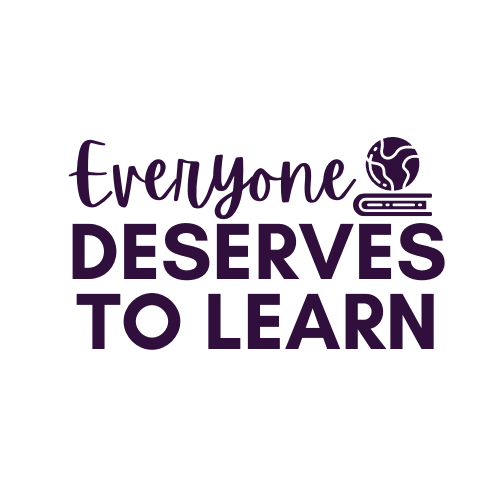Using a Tracking Tool to Ensure Diversity in Text Selection
As a K-8 ELL/MLL teacher, my classroom library included wordless books, emergent texts, picture books, chapter books, and novels. Clifford, Curious George, Magic Treehouse, Jigsaw Jones, Babysitters’ Club, National Geographic, Discovery Kids…I thought I had it all. What I didn’t realize was not many (if any) of my books included characters who looked like my students. Sure, I had a copy of Too Many Tamales, sure, I had a copy of The Watsons Go to Birmingham..but two titles does not a diverse library make. Most of my titles featured non-human or white main characters, with suburban settings, and typical Americana plots, written by white authors. Missing from my library were books that featured my students as main characters, with a mix of urban, rural, and non-US settings, and culture-based plots, written by non-white authors. If you were to audit a typical classroom library, you would most likely find much of the same as what I’ve described. A client that I am working with is on a mission to expand its library and curricular text offerings, and shared the Justice Leaders Collaborative Just Books Tracking Tool with me; this spreadsheet offers a simple but effective way to track books.
The site also offers a free spreadsheet that is pre-filled with a selection of books that have already been coded by various metrics of diversity, as well as a blank spreadsheet you can use to audit your own library.
My work with this client is based on an open-source literacy curriculum. According to the client, the selection within the curriculum is lacking texts that reflect the experiences of the students in the district’s classrooms. Their request was for a set of auxiliary lessons that they could use to supplement or substitute the existing text selection, based on the following criteria:
books primarily featuring students who are Black, Indigenous, Lantinx, Asian & Pacific Islander, Arab, or multi-racial (I will reference as BIPOC throughout this post)
books written by authors whose experience or heritage matches the experience or heritage featured by the main characters
books featuring plots focused on daily life, school, and family, staying away from books that deal with overcoming adversity or suppression. I was told, “Think “Babysitters’ Club but with BIPOC characters.”
books that are current/recently published
books that take place in contemporary/recent history
In addition to the requests from my client, the curriculum follows a stringent set of expectations for lessons, which include Lexile level and approximate Words Per Minute.
These expectations come from the book, How to Plan Differentiated Reading Instruction, by Dr. Sharon Walpole.
So began my work! My first step was to generate Lexile levels for the books that were originally listed on the Justice Leaders Collaborative book list. Lexile levels can often be found by searching the book title on publisher websites, book seller websites, or library websites. Not all books have Lexile levels, especially those published by independent publishing houses, or those that are self-published, so I narrowed my scope to those I was able to Lexile. Following that, I sorted the book titles by Lexile range, and then color-coded them according to the grade level specified. Outside of the constraints of the curriculum, self-published and independent publishing house books would be included, based on a subjective assessment of their text complexity.
Once that process was done, I was able to see that there was a very large gap in titles with Lexiles lower than 450, and greater than 650, which were the ranges I necessary for 1st, 3rd, 4th, and 5th grade lessons.
Few titles that fit my constraints lower than the 450 Lexile.
Few titles that fit my constraints higher than the 650 Lexile.
It became clear to me that the original list included a wealth of titles, but as is, did not fit the constraints of my request. For example, The King of Kindergarten, by Derrick Barnes, is a 720 Lexile. It is not grade-level & maturity level appropriate content as a lesson for 4th and 5th graders, yet it is well above the required range for 1st graders. Although tempting, I could not use it as a lesson. Outside of the constraints of the curriculum and client request, I would not hesitate to use it. Another interesting observation was that some of the titles featuring BIPOC characters were not written by authors who shared the same heritage. For example, Jabari Jumps is an excellent read for 2nd graders, and fits within the 450-650 Lexile. However, the author, Gaia Cornwall, does not share the same heritage as the main character & his family. The client had specifically requested books written about BIPOC characters featuring BIPOC authors.
Having realized these complications, I began researching more titles that fit within the constraints of the client’s request, and added them to the list, marking the various metrics as applicable. My working document continues to grow, as I find more titles that feature BIPOC characters, written by BIPOC authors, with corresponding grade-level and Lexile level connectedness.
In searching for books featuring BIPOC characters whose authors share the same experience or heritage, I made use of the Sora app (to which my organization subscribes), my local library’s e-book catalog, and my personal Kindle Unlimited subscription. Advanced search terms and filters differ by program, so I have spent many, many, hours searching through pages of book titles and covers. A question for future research remains: why is it difficult to find and access diverse texts? Our students deserve to see themselves, their families, and their friends reflected in the books on their classroom shelves.





